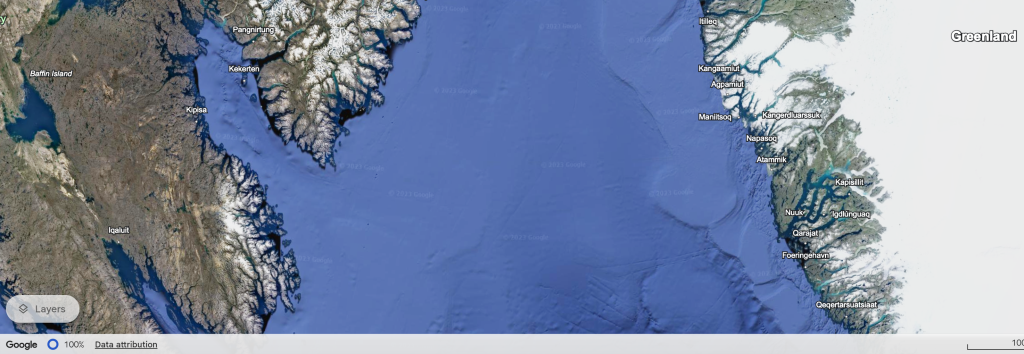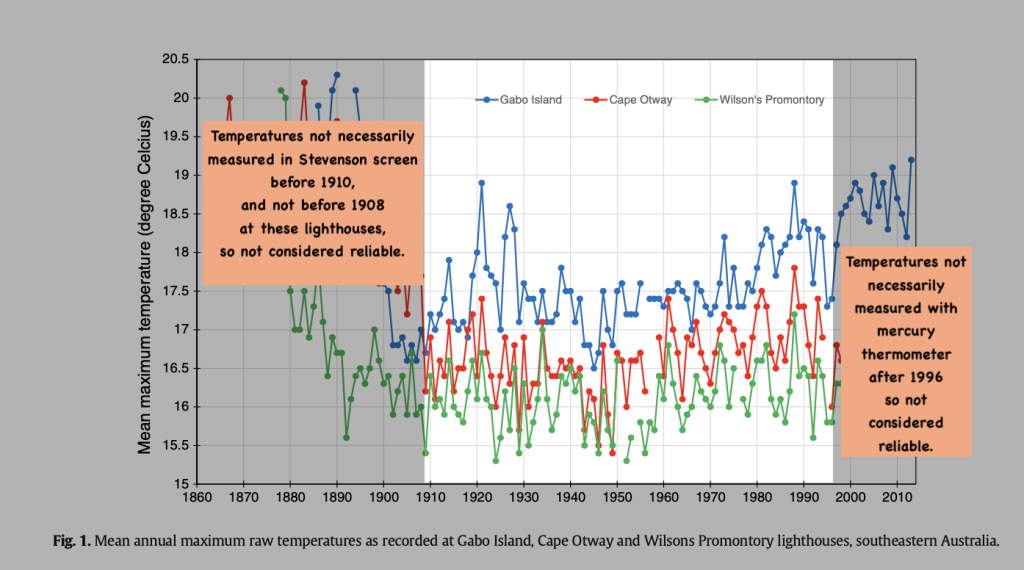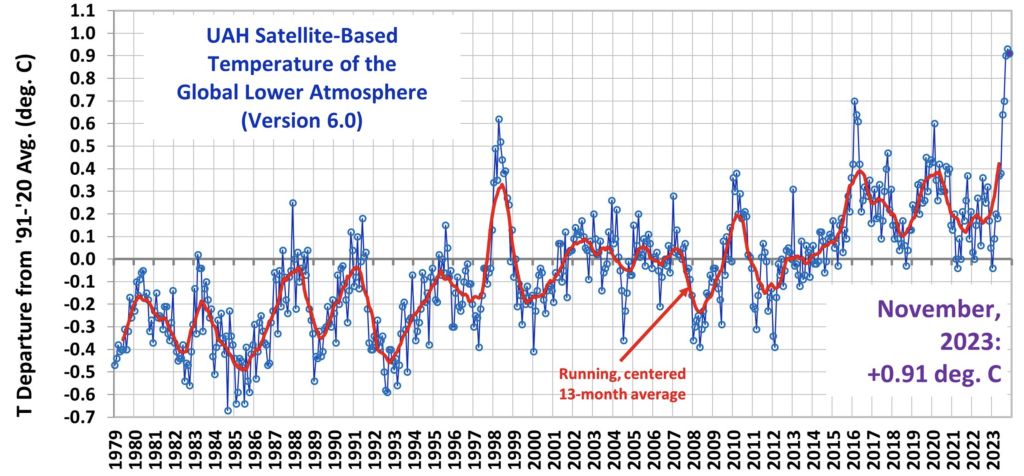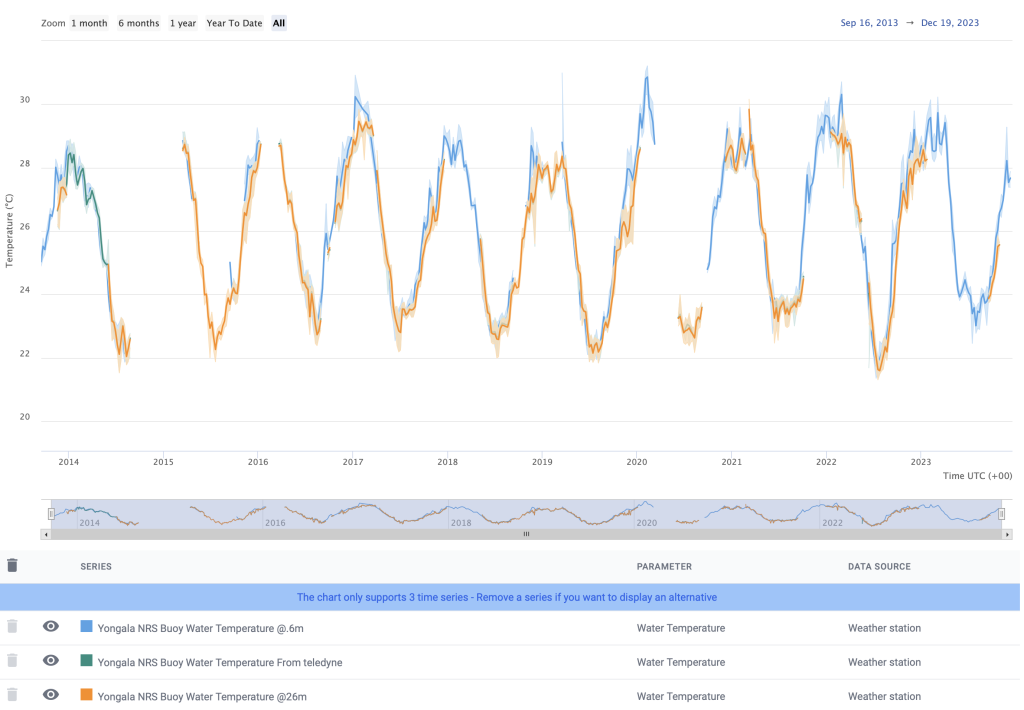After the Alliance for Responsible Citizenship (ARC)* conference finished in London, I caught a British Airlines flight to Seattle, to visit with my daughter. She has just recently moved there, to begin a PhD at the University of Washington.
The view from BA53 was of snow covered tundra as we flew from Greenland, then over Baffin Island towards Hudson Strait near Repulse Bay. The outside air temperature was showing as minus 23 degrees Celsius (minus 74 Fahrenheit) at 11,576 metres (37,979 feet) altitude. I could see deep, evenly-spaced channels cut along the eastern edge of the island, presumably cut by water from the snow as it melts each spring. I assume the snow is melted by the Sun. I can’t image it is melted by the atmosphere even though the atmosphere is, I am repeatedly told, on average some one-degree warmer now, because of all the carbon dioxide.

In Seattle, my daughter took me to the most wonderful second-hand bookshop, Magus Books. I purchased several books, as I inevitably do when I visit a bookshop, including Enlightenment Now: The Case for Reason, Science, Humanism and Progress. That was after I checked the book’s index and saw it had a good number of pages on ‘climate change’: pages 136 – 154.
I was hoping to find some ‘reason’ and ‘science’ concerning ‘climate change’. I was hoping to better understand the mainstream view given all the obfuscation I had just experienced at the ARC conference in London. All these talks on ‘Energy and the Environment’ beginning with an acknowledgement that carbon dioxide causes warming without any explanation of how and why.
Even Richard Lindzen suggested at ARC that I should be more accepting of the mainstream historical temperature reconstructions, more accepting of the idea there has been a 1-degree temperature increase and not so concerned about what he mentioned as some slight discrepancies associated with the transition to electronic probes for measuring air temperatures.

I know I have a tendency to go down ‘rabbit holes’ and get into a level of detail many find too tedious. Here, I thought as I read the cover of Pinker’s book, here was a book written by a most reasonable person and with a section on climate change. It might help me take a few steps back, as Lindzen was suggesting, and see how more mainstream intellectuals describe the physics.
After all, I reasoned, for anyone to be convinced that human-caused global warming is real and caused by carbon dioxide, the Earth must have physical properties that permit it.
According to Wikipedia, Steven Arthur Pinker is a Canadian American cognitive psychologist, psycholinguist, popular science author, and public intellectual. He is an advocate of evolutionary psychology and the computational theory of mind. Pinker is the Johnstone Family Professor of Psychology at Harvard University. And this book was ostensibly promoting ‘reason’ and had a section on climate change. And I know many of my colleagues are fans of Steven Pinker, as they are fans of Jordon Peterson another Canadian psychologist.
Scanning inside the book, I read: anthropogenic (human-caused) climate change is ‘the most vigorously challenged scientific hypothesis in history’.
Great I thought, Pinker is going to lay out the arguments, the case for and against.
But he didn’t and he doesn’t. Much in the same way John Anderson went on about the importance of debate and discussion and Western civilisation being special because of science at the ARC conference while at every opportunity avoiding any meaningful discussion on the same.
Rather, as I discovered only after I purchased the book by Steven Pinker, he writes that,
By now, all the major challenges – such as that global temperatures have stopped rising, that they only seem to be rising because they were measured in urban heat islands, or that they really are rising but only because the sun is getting hotter have been refuted …
Well. I thought, he might have acknowledged that for much of the twentieth century temperatures were actually falling. I also tried to have some discussion with Bjorn Lomborg about this. But he just defers to Judith Curry.

A version of this chart was first published in ‘Atmospheric ResearchVolume 166, 1 December 2015, Pages 141-149’ with comment from me that,
‘All series show significant cooling of maximum temperatures from 1921 to 1950, which is at variance with Australian and global homogenized temperature series.”
Further more, global temperatures could be rising due to something other than ‘the sun getting hotter’, but he’s clearly avoiding the core issue, or at least the one that has been concerning me more recently, exactly how carbon dioxide causes the warming. What is the physical mechanism causing carbon dioxide to warm the Earth and the oceans … or is it just that carbon dioxide is warming the atmosphere?
A page earlier Pinker explains the theory thus: we have excess carbon dioxide from the burning of wood, coal, oil, and gas that ‘wafts into the atmosphere’, where it ‘traps heat radiating from the Earth’s surface.’
But he has not explained to me how this causes the temperature of the Earth to rise, though he claims it does. He writes,
If the emission of greenhouse gases continues, the Earth’s average temperature will rise to at least 1.5 degrees Celsius (2.7 degrees Fahrenheit) above the preindustrial level by the 21st century …
This was more or less as much detail as Bjorn Lomborg, Michael Shellenberger and Steven Koonin could manage at ARC.
We know that carbon dioxide levels were much higher in the distant past, and temperatures also, but what exactly is the physical mechanism that causes the warming of the Earth and the oceans?
If Pinker, Shellenberger and Lomborg, can’t explain this, which they don’t, well they are just repeating what the King says. Everyone knows King Charles III is a great proponent of global warming, he insists we believe as much.
Pinker claims to have written a book about reason, but he doesn’t even acknowledge any one of the very valid challenges to this theory of human-caused global warming.
It was like this at the ARC conference in London, there was this assumption that everyone knows carbon dioxide causes warming of the Earth and the oceans and that as atmospheric levels of carbon dioxide rise we risk even more warming, but no-one was prepared to engage in any detail or explain the physical mechanisms. Certainly no-one wanted to explain to me how the spike that was occurring in global temperatures while I was in London, how it had been caused by carbon dioxide.

It got me thinking, how do I explain succinctly in plain English, why I have come to conclude, that on average, carbon dioxide is not warming planet Earth – not at all!
It got me thinking, I really haven’t explained why I don’t subscribe to even the Will Happer view of global warming: that carbon dioxide is causing some warming, just not much more than 1 degrees Celsius. I have pressed Happer for more mathematics and calculations and more explanation as to how he gets to his 1 degree of warming. But he has not been forthcoming on any of this. There is of course the very popular IPA YouTube from his Australian tour. But it doesn’t have enough detail for me.
If we are going to work from average values, which is how Happer, Lindzen and the IPCC present information, then I just can’t understand how considering overall energy budgets and averages, how carbon dioxide is going to warm the Earth.
To put it very crudely, and appealing to only known physical properties of the Earth: the average temperature of the lower atmosphere is just not warm enough.
The lower atmosphere is certainly not warm enough to warm the oceans that are on average17 degrees Celsius.
And certainly the ocean is a lot warmer where I go scuba diving which is mostly in the Tropics. In the Tropics, ocean temperatures mostly range between 20 and 30 degrees Celsius. Which got me thinking: how can the atmosphere warm the ocean in the Tropics and Subtropics when ocean temperatures are so much warmer than the temperature of even the lower atmosphere and all year around.
To be continued.
This is part 4 of a series that I began with my visit to London late October, you can read part 3 by clicking here.


_____________________________
* According to Wikipedia, ARC was founded by four people including Paul Marshall. It also says:
“He is the co-founder and chairman of Marshall Wace LLP, one of Europe’s largest hedge fund groups.[8] Marshall Wace[9] was founded in 1997 by Marshall and Ian Wace.[10] At the time, Marshall Wace was one of the first hedge funds in London.[6] The company started with $50 million, half of which was from George Soros.[6]”


 Jennifer Marohasy BSc PhD is a critical thinker with expertise in the scientific method.
Jennifer Marohasy BSc PhD is a critical thinker with expertise in the scientific method.

Jennifer, the explanation of how ARC was “created” is interesting enough in itself.
Rob.
The difference between you and the rest is quite simple.
You start with a question. They start with a belief.
Keep up the thinking.
Keep up the work.
I enjoyed your article
Cheers
Jennifer Please Please continue to ask this question. I suspect that everybody just accepts this premise that CO2 causes global warming just the same as everybody accepted that the world was flat for thousands of years. The church effectively locked Galileo up for saying the earth was not the centre of the universe, when 2000 years ago we know from the Antikythera mechanism that it was known that the earth was a planet around the sun. What is it with science that they will not be scientists and examine the facts. The science is in listen to Will Happer and change this narrative as soon as possible.
Not George Soros again.
Interesting question, how the atmosphere warms the oceans. It would be surprising if no studies have been published on this question. On average, the atmosphere needs to be greater than the ocean temperatures for the oceons to be warmed. The southern hemisphere has a greater area of water than the northern, so the warming of the oceans should be dominated by the oceons in southern hemisphere, I would guess.
Have considered the large number of Volcanic Vents in the ocean being the cause of increasing water temperature and Carbon Dioxide?
“The director of the Australian Centre for Excellence in Antarctic Science, Matt King, says the changes in the ice and ocean had made it a year in which “even the scientists have been sobered”.
“It’s not often in my career when scientists have really been gobsmacked by what they’re seeing, but people have really been alarmed. It caught them on the hop,” he says. “We knew that substantial change was coming down the pipeline, but we have seen processes that we thought might play out in the middle of the century playing out much sooner.”
It ‘s really simple. IPCC froze in the volcanic eruptioons from Krakatoa to Cerro Azul inall the climate models. Now they do not know how to save face.
https://www.dropbox.com/scl/fi/qbdnq0k800jh2ksab109u/Consensus-Has-Hysteria.pdf?rlkey=4rlir71dvkddwi078nsvgktzt&dl=0
According to Rankama and Sahama,(Chicago Press, 1950), C02 reaches a saturation point in the atmosphere and is then taken up by the oceans,(especially in the Southern Hemisphere.) i.e. it gets heavy and falls. This means, it does not ‘warm’ the atmosphere –any ‘albedo’ (reflectivity) effect from atmospheric gases and factors such as volcanic activity and wind-blown dust and ice, must therefore contribute to an overall ‘cooling’.
The bombardment of the upper atmosphere by charged particles expelled from the Sun reduces atmospheric water vapour by a process known as the ‘Metal/Steam Reaction’. This process happens in exact Solar-induced ‘retrograde’ Orbital Cycles, which cause the atmospheric temperature to vary with the ensuing reduction of water vapour albedo, as these Longitudinal Dry Cycles circle the planet from East to West, (the opposite direction to Earth’s Axial Spin.)and affect BOTH hemispheres simultaneously.
There is much research left to be done on these processes – but the exact Terrestrial Footprint around the Earth, of the (currently)most significant of these Dry Cycles, has been observed and plotted. This means there is NO ENSO (and never has been.) There is NO overall Global Warming,(and there likely never will be.)
https://drive.google.com/file/d/1TFFDXyhe5b0ZfLCiFt23W4PbubQaQfQo/view?usp=sharing
Dear Jemnifer.
I always enjoy reading your explanations of climate science and global warming, and commend you for challenging the trend by so many ” intellectuals” to accept that CO2 is responsible for global warming. As you say, there is much acceptance around the periphery of CO2 global warming without any explanation of how this occurs. The sun warms earth and oceans directly, but does not directly warm the atmosphere. Your comment on the effect of El Nino are very interesting, and I have long considered sub-marine volcanic vents could cause warming of ocean currents, and hence localised climate. Keep up the great work. Your common sense and scientific integrity is very much needed in this debate.
We should just accept that CO2 is a trace gas and that it certainly has a trace influence.
We should accept that water is abundant in the oceans and on land and in the atmosphere, we should accept that water changes state and most of the processes that humans have built to control temperatures of buildings, vehicles, passenger space and the power producing space, frequently use water, often in its changing states. A lot of what we know about water and its changing states came from observing nature and a lot came from experiments.
The climate clearly has thermostat settings. When polar oceans are thawed, the water evaporates and then it snows on land in cold places, it snows until more ice spreads and causes colder. Ice pushing into the turbulent salt water currents chill the water to form sea ice which shuts off the evaporation and snowfall. Lack of enough snowfall allows the ice to push into the oceans and spread across land and cause cooling by ice thawing and reflecting until the ice is depleted, then cycle repeats.
We should stop studying a trace gas and start studying abundant water in all of its changing states.
We should stop featuring something that is a trace of a likely cause because it is a trace and start featuring something that is abundant and is a likely cause because it is abundant.
Jennifer wrote: “If we are going to work from average values, which is how Happer, Lindzen and the IPCC present information, then I just can’t understand how considering overall energy budgets and averages, how carbon dioxide is going to warm the Earth.”
Good question!
here is my Question (vaguely related):
5000 years ago, there was the Egyptian 1st Unified Kingdom warm period
4400 years ago, there was the Egyptian old kingdom warm period.
3000 years ago, there was the Minoan Warm period. It was warmer than now WITHOUT fossil fuels.
Then 1000 years later, there was the Roman warm period. It was warmer than now WITHOUT fossil fuels.
Then 1000 years later, there was the Medieval warm period. It was warmer than now WITHOUT fossil fuels.
1000 years later, came our current warm period.
Climate alarmists are claiming that whatever caused those earlier warm periods suddenly quit causing warm periods, only to be replaced by man’s CO2, perfectly in time for the cycle of warmth every 1000 years to stay on schedule. Not very believable.
The entire climate scam crumbles on this one observation because it shows that there is nothing unusual about today’s temperature and thus CO2 is not causing warming or any unusual climate effects that are frequently blamed on warming.
Evidence that those warm periods actually occurred:
http://www.debunkingclimate.com/climatehistory.html
Evidence that the Roman & Medieval warm periods were global:
http://www.debunkingclimate.com/warm_periods.html
http://www.debunkingclimate.com/page216.html
Is there any evidence that this is wrong?
One of my favourite thoughs about gasses and least discussed is inverse solubility. Gas dissolves in cold water and bubbles out of hot water. That makes the northern and southern oceans great sinks for CO2. It is also the reason CO2 follows warming oceans rather than causes warming oceans. The alarmists like Gore got the cause an effect backwards.
Dear Jennifer,
If I understand you correctly you are questioning the “greenhouse effect” (GHE).
There is one thing* I fully agree with you: apparently nobody in this world is willing – or is it able? – to explain the GHE in a (simple) way so that most people can understand it.
I compare it with solving a puzzle, but there is no store where you can go and buy (all) the pieces… you have to look/search for them yourself.
I am not claiming to have the full puzzle solved, I am probably not even half way. But the good news is that all the pieces I have, have already found a place in my puzzle; and… I haven’t found (yet?) a single piece that would falsify my current understanding of the GHE.
The real breakthrough in my understanding came when I realized how to interpret “back-radiation” and “re-radiation”. This is fundamental and you should make sure you get the consequences of this “knowledge”.
The 2 basic radiation formulas are Stefan-Boltzmann‘s law – which (Wikipedia) describes the intensity of the thermal radiation emitted by matter in terms of that matter’s temperature – and Planck’s law – which (Wikipedia) describes the spectral density of electromagnetic radiation emitted by a black body in thermal equilibrium at a given temperature T.
The “trick” is (as a first approach) to see the Earth(‘s Surface) and the (Earth’s) Atmosphere as 2 different entities each obeying these basic laws. The Surface behaves almost as a perfect black body (SB-law with an emissivity close to 1) while the Atmosphere is quite a different story: one way to look at it is to say the Atmosphere acts as a black body with an emissivity of about 60%, but for the understanding of the GHE we better take a look at Planck’s law and say the Atmosphere follows Planck’s law taking into account that the greenhouse gases will control the height(temperature) at which the different frequencies/wavelengths will be emitted (to space).
Since this is so fundamental in the understanding of the GHE, do you need any clarification(s) before moving on to more details?
* Another point I am completely on your side is the ridiculous averaging in climate “science”: most, if not all of the processes involved are non-linear…
PS.
Since the earth system is quite complex and chaotic it will probably never be possible to make a detailed calculation, but it doesn’t mean that you can’t identify the contributors to the GHE and get some idea of their relative importance…
The biggest contributor is clearly water (in its 3 phases). In (nearly) clear sky cases water vapour wins clearly from CO2, that itself contributes much more than all other GHG together.
Clouds (water drops and ice crystals) have a big impact as well, but to put figures on it or even an importance order compared to water vapour – which is also quite present in a cloudy environment – on a global base doesn’t look straightforward to me.
Maybe an important question/remark to deal with your concerns: how can mankind influence the amount of GHG in the Atmosphere? Seen the abundance of water on the planet, I guess the “easiest” way is by burning fossil fuels and cutting trees…
According to my high school physics the atmosphere doesn’t warm the ocean it is the other way around. What the CO2 and other greenhouse gases in the atmosphere do is impede the rate at which the oceans can lose heat by reflecting some of the radiation back. That raises the equilibrium temperature.
The oceans are heated by the sun during the day, and they lose some of that heat during the night. If they lose it more slowly they become warmer. If they lose it faster they become cooler.
I don’t know any serious physicists who say anything else, but I have heard a lot of climate scientists say very silly things about the atmosphere warming the earth. Because they say silly things doesn’t mean that there isn’t a greenhouse effect, just that the inferences they draw from the model in their mind are likely to be wrong.
Pinker et al aren’t physicists so they accept what the overwhelming majority of catastrophists and realists accept, which is that there is a real greenhous effect. And because they aren’t physicists most of them don’t argue with the IPCC modelling – they take it as a given and then argue policy prescriptions from there.
They shouldn’t be disbarred from discussing climate science policy because while the physics is one thing, once you accept some degree of warming there is an issue as to whether or not you need to worry about it. If you decided you need to worry, you then need to decide whether that concern is large enough amongst all your other concerns to do something about it.
Once you get to that stage there is plenty of room for economists, data scientists, engineers, policy wonks etc. to have an opinion. The problem is most of them overestimate the need to worry. Adaptation has always been the best no regrets policy. Mitigation is hugely expensive and mostly futile. Because of their worry they throw everything at the latter, while we go ahead adapting anyway, as demonstrated in the decline in deaths from weather related catastrophes.
Yes Jennifer, you are correct. Shallow warm parts of the ocean will not absorb heat from the troposphere. Most of the absorption is occurring in colder parts of the ocean in contact with warmer air which is containing more heat due to the higher CO2 levels. The mechanism is radiation and conduction. Ocean currents then distribute this heat.
On another matter Don Gaddes above says “C02 reaches a saturation point in the atmosphere and is then taken up by the oceans,(especially in the Southern Hemisphere.) i.e. it gets heavy and falls. ” This seems a rather dubious statement. CO2 levels have been at least 10 to 20 times higher in the distant past and in fact there is no saturation limit in the sense of a maximum percentage that the atmosphere can hold.
Hi Danny
In his Australian lecture series (link above to Youtube video), Will Happer explains how the surface of the Earth radiates long wave radiation and how the mathematics was developed by German physicists Joseph Stefan and Ludwig Boltzmann. I like how Happer describes the Earth ‘glows in the dark’ for thermal radiation. And I gather this will increase with more carbon dioxide in the atmosphere.
But my big issue is how more thermal radiation in the atmosphere affects the temperature of the oceans.
I do not doubt that carbon dioxide absorbs and transmits long wave radiation, and this has the potential to warm the atmosphere. I am not sure how the atmosphere warms ’the Earth’, in particular the oceans.
The more I look at the data, I am of the impression that the oceans are driving everything and as far as I can see independently of any greenhouse effect.
Kind regards
Hi Graham
Are you saying the Greenhouse effect manifests primarily as the ocean losing less heat because the atmosphere is warmer?
Thanks for taking the time to comment. :-).
Hi Noel
You write,
‘Most of the absorption is occurring in colder parts of the ocean in contact with warmer air which is containing more heat due to the higher CO2 levels. Ends.
Where exactly is this happening , which parts of which oceans?
Much thanks in anticipation.
No, the atmosphere is warm, but on average less warm than the oceans, because it is warmed by the oceans. The oceans retain their heat a little longer than they would without an atmosphere because the atmosphere retards the emission of infra-red radiation which allows them to cool (putting aside the issue of convection).
Think of the atmosphere as being like your jumper, except that unlike your jumper it can only be heated by your body warmth, not any sunlight that falls on it – the sunlight just passes straight through. When you wear a jumper you retain more heat because you can’t radiate as much as without the jumper, and the inside of the jumper warms up a little from your body heat. Not a perfect analogy, but then nothing is, but we all know that putting on a jumper keeps us warmer without itself bringing any of its own heat to the event.
Hi Noel
You write,
‘Most of the absorption is occurring in colder parts of the ocean in contact with warmer air which is containing more heat due to the higher CO2 levels. Ends.
Where exactly is this happening , which parts of which oceans?
See this link.
https://www.climate.gov/news-features/understanding-climate/climate-change-ocean-heat-content#:~:text=Rising%20amounts%20of%20greenhouse%20gases,over%20the%20past%20few%20decades.
The second diagram shows the regions where the heat has been measured to be absorbed.
Graham Young makes several points
“No, the atmosphere is warm, but on average less warm than the oceans, because it is warmed by the oceans.” Do you have some data on air temperature vs ocean temperature to support this?
“the atmosphere as being like your jumper, except that unlike your jumper it can only be heated by your body warmth, not any sunlight that falls on it – the sunlight just passes straight through.”
To be pedantic, the atmosphere will absorb a small amount of the sun’s heat directly primarily due to greenhouse gases. Of course the bigger issue is that the outgoing radiation is more strongly absorbed due to its different wavelength.
“putting on a jumper keeps us warmer without itself bringing any of its own heat to the event” Yes- and we are putting on a thicker jumper every day atmospherically speaking.
You might find the jumper analogy helpful, but it doesnt really allow for radiation emitted by greenhouse gases. Jumpers largely cut down on convection and evaporative heat loss.
The jumper is an analogy Jen, that means you start from the premise it is not the same thing, but it can demonstrate some things about the phenomenon you are talking about. A thermos demonstrates both the principles, if you are familiar with that. It has a vacuum to separate the fluid from any conductive surface, and it has a slivered surface to reflect the IR. The thermos doesn’t get hot, and the liquid stays warm.
The physics says that the air temperature just over the sea has to be lower than the sea which is confirmed by a couple of references I can find quickly. Global average sea surface temperature is calculated to be 16.1 https://en.wikipedia.org/wiki/Sea_surface_temperature#cite_note-SSTMEAN-44 (the site is down atm, but Wikipedia seems to be correct) and global average air temperature is 15 https://www.grc.nasa.gov/WWW/K-12/airplane/airprop.html.
So you are correct empircally speaking – something colder can’t be warming something hotter on average.
Hi Jennifer,
You say: (hope the html instructions work)
Sorry to say but your impression is wrong.
The driver is that yellow ball we all like to see in the sky: the Sun.
The greenhouse effect determines the difference between the energy fluxes at the Earth’s Surface and TOA (Top of Atmosphere).
The Earth system evolves to an equilibrium (at TOA): incoming energy equal to outgoing energy, bearing in mind that about 30% of the incoming energy is reflected back to space without any energetic impact to the Earth.
These are the key processes and although the Earth system has an important role to play on the environment in which the greenhouse effect has to work, any hypothesis you want to test must be in agreement with these basics.
The three values that are fundamental to the GHE: temperature, pressure and concentration of the GHG.
@Graham,@Noel;
Concerning the amount of solar energy that is absorbed by the Earth’s Atmosphere, please check the famous Kiehl-Trenberth diagrams where it is at least 20%….
Amazing how much work and discussion has gone into searching for the mechanisms controlling this moving target.
Has there been any thought given to wind speed and evaporation cooling the ocean surface more quickly? These would be local and unpredictable factors, unless storms could be provoked in some way.
I think that all bets are off until we can remove the effects of global contamination at high altitude from the relentless “geoegineering” going on today. It’s clearly visible from the ground and from satellites, but apparently is totally imaginary, and we are supposed to be quiet about it, and ignore the few pilots speaking out and even governmental institutions admitting the existence of these programmes over decades.
Dispersing “cloud seeding” nuclei by the kiloton, and dimming the sunlight might possibly mess up NASA’s predictions that we’re all facing a quick and lethal temperature rise, entirely due to CO2 increasing.
There’s no control group in this experiment. Let’s begin one by turning off all aerial spraying and see what happens. Can we please leave the skies alone?
Hi Jennifer,
I have to admit I’m a bit disappointed… I expected some sort of feedback from your side…
Anyway, let me give some further comments on your reaction.
If you look at the calculations made by Van Wijngaarden and Happer, you see that the energy flow to space is 277 W/m² when the CO2 concentration is 400 ppm and ceteris paribus (all other things being equal) this would reduce to 274 W/m² by a CO2 concentration of 800 ppm. So the ‘glowing’ would DEcrease.
Of course, all things won’t remain equal, as the Earth will react to this CO2 doubling and restore the balance at TOA. So in reality the ‘glowing’ will undergo some (small) shifts in frequencies but the total energy flow – read glow – to space will stay the same.
In fact the direct warming effect of the atmosphere by an increase of the CO2 concentration can be neglected. The real warming of the oceans is done by the Sun; as described above an increase in CO2 results in less heat loss by the Earth to space, so the incoming solar energy will start warming the Surface (oceans being the biggest part of this) until the balance at TOA is restored
And also a comment on your original text.
The spikes – plural since there are several in the Spencer graph – are NOT caused by carbon dioxide. These are weather related, more specifically to ENSO (El Niño-Southern Oscillation).
But at the same time it shows one of the “tools” the Earth has to “control” the temperature of the atmosphere: it you look carefully at the graph you see that in between the spikes a kind of plateau installs and since we are in a phase of (slightly) increasing temperatures, each plateau is a bit higher than the previous one.
When Roy Spencer reports that since 1979 the temperature is rising by 0.14 °C per decade, this doesn’t mean that it will be 0.014 °C each year; it goes in steps with ENSO as the driving force.
Hope this makes sense and is useful for you.
Many of the downward spikes in the charts above correspond to volcanic activity after the end of the Little Ice Age (warmer than now) . The trend is probably regression to the norm of Arrhenius 1906 (the forgotten paper) and NASA’s estimate today. There are el Nino and la Nina to sort out but they probably cancel in the long run. IPCC has not removed the effect of global volcanic events from 1883 to 1932! Their models had a cool start. CO2 is a weak hypothesis.
3) 1883: Krakatoa, Netherlands Antilles (Indonesia) – The eruption produced the loudest sound ever heard in recorded history and was heard 4,800 km away. It caused a 5-year volcanic winter. More than 36,000 died from the eruption or the tsunamis caused by land and sea slides. Anak Krakatoa erupted violently in 2018.
4) 1886: Okataina [aka Tarawera], N.Z. – In Auckland the sound of the eruption and the flashing sky was thought by some to be an attack by Russian warships. Approximately 2 cubic kilometres of ash erupted, more than Mount St. Helens ejected in 1980.
5) 1897: Mount Mayon, Philippines – Mayon’s longest uninterrupted eruption occurred on June 23, 1897, and lasted for seven days. Eleven kilometers eastward, the village of Bacacay was buried beneath 15 m of lava. Ash was carried as far as 160 kilometres from the event, which killed more than 400 people.
6) 1902: Mount Pelée, French Department of Martinique, Lesser Antilles – The island arc of the Caribbean. The eruption killed about 30,000 people.
7) 1902: Santa Maria, Guatemala – The eruption in 1902 was one of the three largest eruptions of the 20th century, after the 1912 Novarupta and 1991 Mount Pinatubo eruptions. It is also one of the five biggest eruptions of the past 200 (and most likely 300) years.
8) 1907: Ksudach, Kamchatka, Russia – The last eruption of Ksudach was the largest ever recorded in Kamchatka. The eruption in 1907 sent ash which was transported by the jet stream made North America east of the Rockies unseasonably cold.
9) 1912: Novarupta, Katmai Peninsula, Alaska – The 1912 eruption that formed Novarupta was the largest to occur during the 20th century. The 60-hour-long eruption expelled 13 to 15 km3 of ash, thirty times as much as the 1980 eruption of Mount St. Helens.
10) 1913: Volcán de Colima, Mexico – Colima which has erupted more than 40 times since 1576 is one of the most active volcanos in Mexico and in North America. One of the largest eruptions was in 1913.
11) 1914: Sakurajima, Japan – AKA Cherry Blossom Island is the most active volcano in Japan. Formerly an island, it is now a peninsula, in Kagoshima Prefecture, Kyushu, Japan. The lava flows of the 1914 eruption connected it to the mainland.
12) 1916 – 1918: Tungurahua, Ecuador – Tungurahua in the Central Andes erupted every 80 to 100 years. The major eruptions have been in 1773, 1886 and 1916–1918.
13) 1918: Katla, Iceland – The last major eruption started on 12 October 1918 and lasted for 24 days. The 1918 eruption extended the southern coast by 5 km.
14) 1932: Cerro Azul, Chile – Cerro Azul is responsible for several of South America’s largest recorded eruptions, in 1846 and 1932.